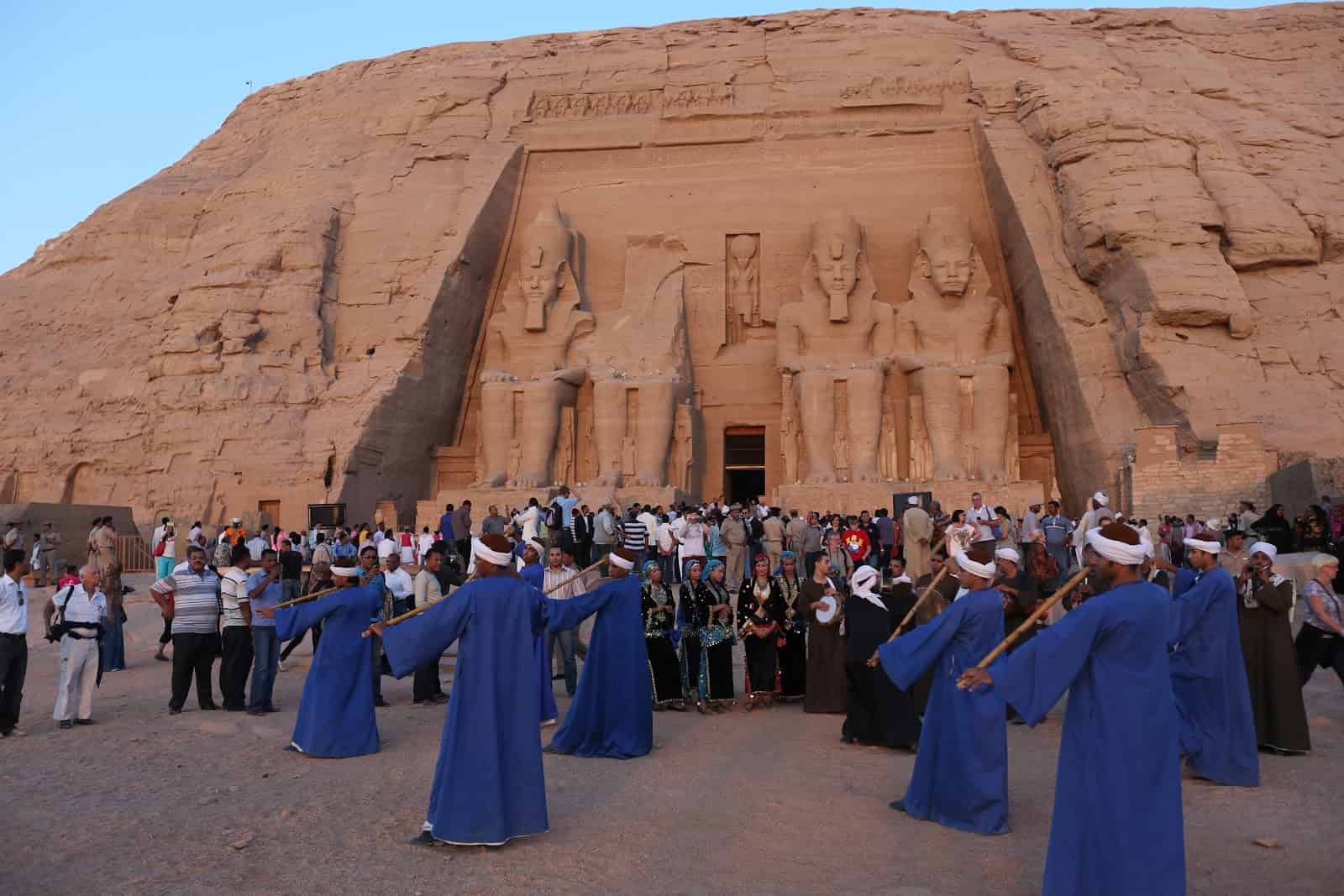Welcome to the enchanting world of Abu Simbel, where the ancient past collides with the present, and the sun tells a story that transcends time. Nestled on the banks of Lake Nasser in southern Egypt, the Abu Simbel Temples stand as magnificent monuments to the glory of ancient Egyptian civilization. Among the various awe-inspiring events hosted by these temples, the Sun Festival holds a special place, offering an unforgettable experience that echoes the grandeur of Egypt’s history.
Unveiling the Marvels of Abu Simbel:
1. The Temples of Ramses II and Queen Nefertari:
At the heart of Abu Simbel are two colossal temples built by the great Pharaoh Ramses II and dedicated to the gods Ra-Harakhty, Ptah, and Amun. The intricately carved façades depict the pharaoh’s military victories and divine associations, showcasing the mastery of ancient Egyptian artistry. Adjacent to Ramses II’s temple stands the smaller yet equally remarkable temple dedicated to his beloved wife, Queen Nefertari.
2. The Engineering Feat:
The temples were originally carved into the mountainside during the 13th century BC. However, recognizing the threat posed by the rising waters of Lake Nasser due to the construction of the Aswan High Dam, a remarkable international effort led to the relocation of the entire complex in the 1960s. The meticulous relocation preserved the temples’ orientation to allow the Sun Festival to continue captivating visitors.
The Sun Festival:
Standing majestically against the backdrop of the Nubian desert, the Abu Simbel temples are a testament to the ingenuity and ambition of ancient Egyptians. These colossal sandstone structures, carved into a mountainside by the order of Pharaoh Ramses II, have captivated visitors for centuries. But beyond their awe-inspiring size and intricate carvings lies a hidden wonder: the Sun Festival, a natural spectacle that occurs twice a year, illuminating the inner sanctum of the Great Temple in a breathtaking display of light and shadow.
The Sun’s Embrace: Imagine the sun’s rays piercing through the temple entrance, bathing the statues of Ramses II, Ra-Horakhty, Amun, and Ptah in a golden glow. This remarkable event occurs on February 22nd and October 22nd, coinciding with the anniversary of Ramses II’s coronation and his birthday.
Witnessing the Miracle: Experiencing the Sun Festival is a truly unforgettable experience. As the first rays of dawn touch the horizon, anticipation fills the air. As the sun climbs higher, it casts a long shadow over the temple entrance, slowly revealing the figures within. Then, in a moment of perfect alignment, the sun’s rays penetrate the inner sanctum, illuminating the statues for just 20 minutes. The effect is mesmerizing, a tangible connection between the ancient Pharaoh and the life-giving power of the sun.
Beyond the Festival: While the Sun Festival is a highlight of any visit to Abu Simbel, the temples offer much more to explore. The Great Temple boasts magnificent statues, intricate hieroglyphics, and impressive relief carvings depicting the Pharaoh’s military victories. The smaller temple, dedicated to Ramses II’s beloved wife Nefertari, is equally impressive with its graceful statues and vibrant colors.
Embarking on a journey to witness the Sun Festival at Abu Simbel is more than a tourist experience; it’s a pilgrimage into the heart of Egypt’s ancient soul. As the sun casts its golden rays upon these colossal monuments, you’ll find yourself captivated by the magic of a civilization that defies the boundaries of time.



Comment (0)